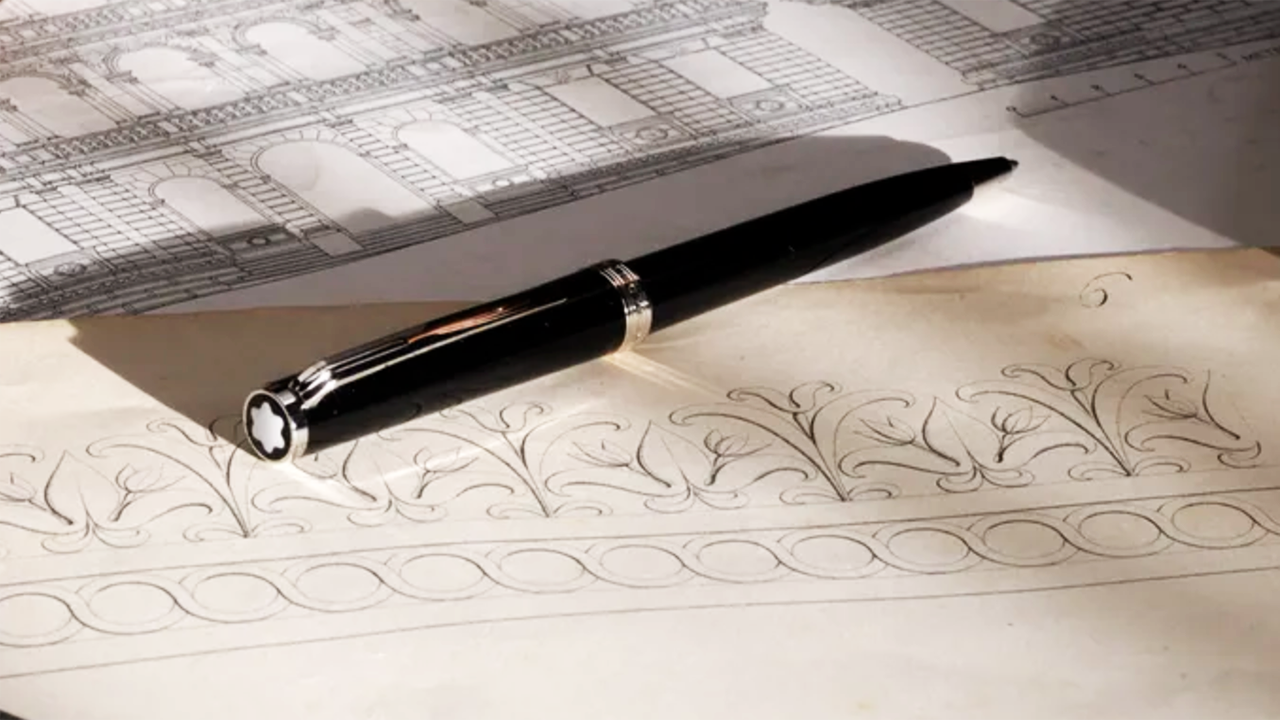Everything
Think of the term luxury and the name Montblanc should come to mind. For more than 100 years, the German brand has been the first choice for those who seek understated design but of the highest quality materials and details.

And while Montblanc might have written its name into the history books with its impeccable writing instruments, their line of leather goods – bags, wallets and accessories – have become synonymous with exquisite craftsmanship that balances contemporary aesthetics.
Last year, the company announced that Marco Tomasetta would be joining as Creative Director, bringing Montblanc into a new era of production. One that would further push the brand into the new hybrid world of luxury, formality and leisure.
ICON was able to chat to Marco during the launch of Montblanc’s new collection that integrates their writing heritage with the growing leathergood and accessories offering.

ICON: You’ve previously worked at some of the biggest fashion houses such as Louis Vuitton, Chloe and Givenchy. How will your background influence your tenure at Montblanc which isn’t a fashion house?
Marco: Every one of my roles has been an enriching experience and different in its own way. I have been really fortunate to work with some incredibly iconic luxury brands and I have brought something from each of those roles into the next one. Longevity and relevance for any brand comes from the ability to constantly reimagine itself, while never losing sight of the unique attributes that made it stand out from the beginning. The fact that Montblanc is not a fashion house but I diversified luxury brand is what makes this role so exciting to me. I will apply my experience reimagining brands and design to find new ways to remind existing and prospective customers of the attributes that have made Montblanc extraordinary for over 115 years.
Montblanc’s heritage is one in subtle, yet playful. What is your vision for the brand?
My task is to develop a cohesive global creative vision, rather than a very category-focused approach, making sure everything is connected across the Montblanc universe. Part of that vision is identifying that red thread that connects everything. The success of Montblanc design is encapsulated in some of its most iconic designs, and few objects in the world of luxury are as iconic as the Meisterstück writing instrument, so I kept thinking how can we be bolder and braver in design while finding our creative identity in the very object that makes the brand so recognised globally. Montblanc unmatched position as a pioneer of the culture of writing and a lot of the creative vision is to really elevate that. There is so much to work with already within the Montblanc universe and heritage, so this is about pulling things through in bolder, more exciting ways.

Balancing heritage and innovation will be a key part of your role as Creative Director. Which one do you place more emphasis on?
It’s always a fine balance, however both have lived successfully side by side in the world of Montblanc for so many years, so I don’t think the focus should be necessarily on trying to decide what to place more emphasis on, but rather thinking about what makes sense to our customers. Montblanc is on a journey to establish itself as the Maison of Luxury Business Lifestyle, creating products that align with its mission to inspire people to do leave their mark by doing what moves them in life, and achieve their path to success in their own unique ways. They require innovative products that are grounded in a sense of belonging, and heritage. It‘s about products with functionalities and design that have true purpose and meaning in their lives. There is so much quality and depth to Montblanc’s heritage, it’s just about applying it in fresh, and creative ways.
The traditional idea of men’s accessories has slowly been changing – men are now happily carrying handbags for themselves, for example. Is this genderless approach to accessories and style something that Montblanc sees in its own future?
I don’t think a more gender neutral approach is new to Montblanc in reality as many of our pieces have been used by both men and women, and are not really categorised by gender as much as they are by their design identity or their functionality. I do think that a younger customer does not want to be defined in the same way, or define their chosen products in that way. They just want design they can relate to and formats that meet their needs.

What are the most important elements for you when designing a new collection?
I always start with the archive to understand the origins and the evolution of the brand and its design identity. With Montblanc, that was a fascinating experience because there is so much history and moments of innovation. I also consider functionalities of each product. Will it truly serve its owner in a way that matters? Quality is a critical element and non-negotiable for a brand like Montblanc, after its logo is the snowcap emblem, representing the summit of excellence. Finally, collections have to have a surprising factor so that’s where research on new materials, textures and prints come into play, as well as thinking about sustainability factors.
Where do you seek inspiration while developing concepts or ideas for new collections?
I am a keen observer, so I watch the world around me with great attention. I also get a lot of inspiration from my travels, the books I read, the films I watch and the music I love to listen to. But above all, the most exciting source of inspiration is observing the everyday. How people interact, how they lead their lives, what matters to them, and moves them. That’s ultimately who I am designing for.